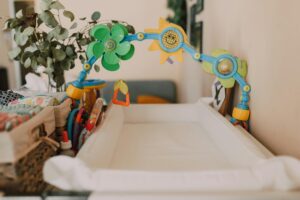
By: Gregg R. Woodnick & Ian D. Haney
[This article was originally published on April 16th, 2020, at the height of the COVID-19 pandemic and when parents were overwhelmed with homeschooling. As of May 2021, children were beginning to ease into their summer plans and mask mandates became more relaxed. Hopefully, by Fall 2021 children will be attending school in person and the quarantine effect will have become a memory.]
Since COVID-19 forced schools to close, reports of child abuse in Arizona have decreased by about twenty-five percent (25%).[1] At first, this seems like one of the few silver linings of the pandemic (outside of Tiger King and attending business meetings without having to wear pants). However, after 20 years of litigating child abuse and neglect cases, I don’t believe this statistic is cause for celebration.
Rather, the decrease in reports of child abuse is likely just a result of children being kept home, not that children are being abused less. When children are kept out of public, the most frequent reporters of child abuse[2] – teachers and pediatricians – lose their ability to check on our children’s wellbeing.[3]
As quarantined parents, we are all struggling to get our children to put down their phones and Xbox controllers so they can complete their schoolwork or sign onto their remote teaching sessions. Yet, long before our recent home stresses, there was a significant population of parents who wanted this lifestyle by opting to homeschool their children. Nationally, there are about 2 million children that are homeschooled.[4] In Arizona, roughly 35,179 children were being homeschooled prior to the pandemic.[5]
For those of us who have waded into the frustrating world of remote learning, we are left wondering why would any parent choose to do this?
According to the U.S. Department of Education, ninety-one percent (91%) of homeschooling parents reported that concern about school environments – such as safety, drugs, and peer pressure – was an important reason for their decision to remove their children from traditional educational environments.[6] Notably, a 2014 study conducted by a pediatrician at the University of Wisconsin, found that forty-seven percent (47%) of school-age victims of child torture had been withdrawn from school for homeschooling and an additional twenty-nine percent (29%) had never been enrolled at all.[7]
There have been highly publicized cases of child abuse in Arizona and around the country involving homeschooled children. Recall that haunting case from two years ago where that California couple was torturing their twelve children?[8] That couple insulated their decades of abuse from detection partly by homeschooling their children.[9] What about the infamous Hart mothers who killed their four adopted children by driving them off a 100-foot cliff?[10] They pulled their children from traditional school and opted to homeschool them after the school reported child abuse on several occasions.[11]
Arguably, albeit I have never seen this in my professional experience, homeschooling can be a meaningful option for some children. However, as just discussed, when children are kept home, the critical care providers – namely, teachers as mandatory reporters – cannot regularly observe children’s wellbeing, which can lead to gut-wrenching results.
There is always the argument that homeschooling deprives children of the ability to nurture the social skills that traditionally develop in formal academic settings. Homeschooling parents often try to fill the gaps by associating with other homeschooled families. Ostensibly, this community shares curriculums and experiences, but statistics show that sixty-two percent (62%) of parents who homeschool their children did not graduate from college.[12] And, only a quarter of the parents took a course to prepare for their child’s homeschooling.[13]
I am not suggesting that homeschooling causes child abuse. I am merely observing, with the perspective of having represented families involved in abuse and neglect, that the lack of regular contact with the professional educators tends to insulate child abuse and neglect from detection by mandatory reporters.
Arizona law requires teachers to report child abuse or face criminal prosecution.[14] Given this obligation, teachers serve as watchdogs for our children. In fact, DCS recently informed the press that “teachers and school officials call in the most reports of child abuse.”[15]
Once child abuse is reported, DCS investigation protocol is to interview the child in a neutral location, typically at the child’s school.[16] But, when children are homeschooled, interviewing in a neutral location is almost impossible without alerting the putative abusive parent of the investigation. COVID-19 has now expanded this investigative dilemma to all children in Arizona.
With COVID-19 forcing schools to close, our children are now learning remotely without the protection of school faculty and staff. Perhaps now we can fully appreciate that teachers and schools do much more than educate – they are the eyes and ears of early child welfare intervention.
Normally, when familial stress is elevated, child abuse rates increase.[17] COVID-19 has caused a historic loss of jobs and forces families to stay home, making parents arm-chair educators for their children. The pandemic is increasing stress in households and that suggests abuse is still occurring, likely with greater frequency. As such, recent news stories about the decline of reported child abuse should actually force us to question what is really happening behind closed doors.
Gregg R. Woodnick is the managing attorney at Woodnick Law, PLLC in Phoenix, Arizona. He is a former adjunct law professor and has lectured in the area of child abuse and neglect matters for Yale University, Midwestern College of Osteopathic Medicine, Arizona State University, and Northern Arizona University.
Ian D. Haney is a former law clerk for Woodnick Law. He graduated from Sandra Day O’Conner College of Law at Arizona State University in May 2020.
[1] Morgan Loew, Side Effect of No School: Fewer Child Abuse Reports, CBS 5 (Apr. 9, 2020). https://www.azfamily.com/news/continuing_coverage/coronavirus_coverage/side-effect-of-no-school-fewer-child-abuse-reports/article_93222788-7ad9-11ea-9737-131aec84859d.html
[2] See id., discussing that the Arizona Department of Child Safety (“DCS”) recently informed the press that “teachers and school officials call in the most reports of child abuse.”
[3] Pursuant to Ariz. Rev. Stat. (“A.R.S”) § 13-3620, both teachers and doctors are required to report suspected child abuse, otherwise they could face criminal charges.
[4] United States Department of Education, National Center for Education Statistics, Homeschooling in the United States: 2012. https://nces.ed.gov/pubs2016/2016096rev.pdf
[5] A 2 Z Homeschooling, Number of Homeschoolers in the USA (Dec. 2018). https://a2zhomeschooling.com/thoughts_opinions_home_school/numbers_homeschooled_students/
[6] United States Department of Education, supra n. 4, at 11.
[7] Barbara Knox, et al, Child Torture as a Form of Child Abuse, Journal of Child & Adolescent Trauma (2014). https://www.tdcaa.com/wp-content/uploads/Knox-Torture-as-a-Form-of-Child-Abuse-article.pdf
[8] Anemona Hartocollis, Couple Who Tortured 12 Children in their California Home are Sentenced to Life, The New York Times, (April 19, 2019). https://www.nytimes.com/2019/04/19/us/turpin-family.html
[9] Rachel Coleman & Kathryn Brightbill, Op-Ed: The Turpin child abuse story fits a widespread and disturbing homeschooling pattern, The Los Angeles Times (Jan. 17, 2018) latimes.com/opinion/op-ed/la-oe-coleman-brightbill-turpin-homeschool-abuse-20180117-story.html
[10] Matt Stevens, Hart Family, Before Driving Off a Cliff, Hid Dark Home Life from View, The New York Times (Apr. 27, 2012) https://www.nytimes.com/2018/04/27/us/hart-family-crash.html
[11] Id.
[12] United States Department of Education, supra n. 4.
[13] Id.
[14] See supra n. 3.
[15] Morgan Loew, supra n. 1.
[16] DCS, Policy and Procedure Manual, Chap. 2, § 3.
[17] See Morgan Loew, supra n. 1.


